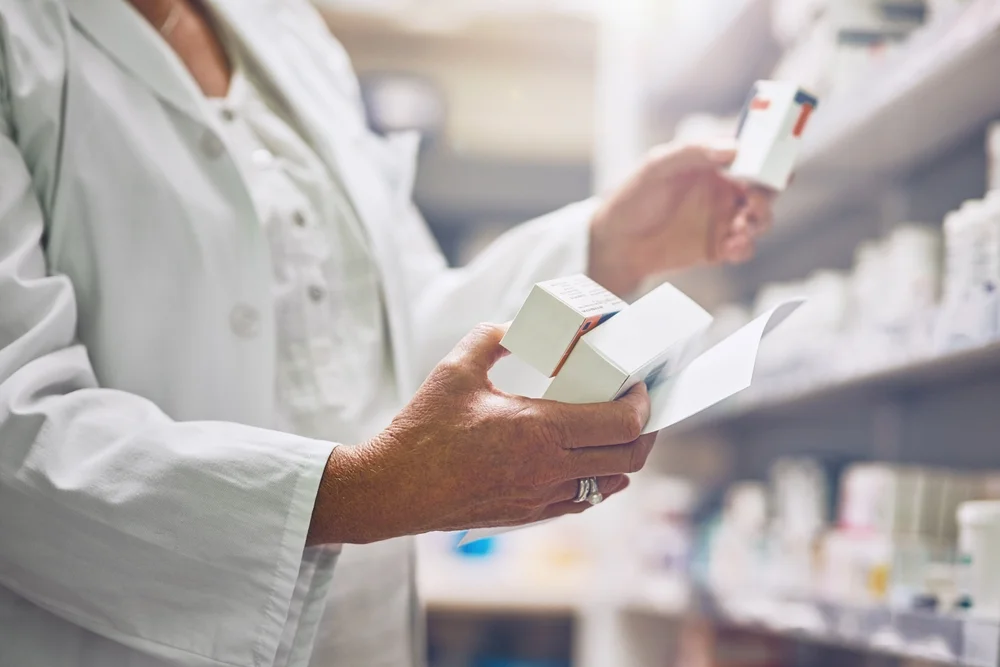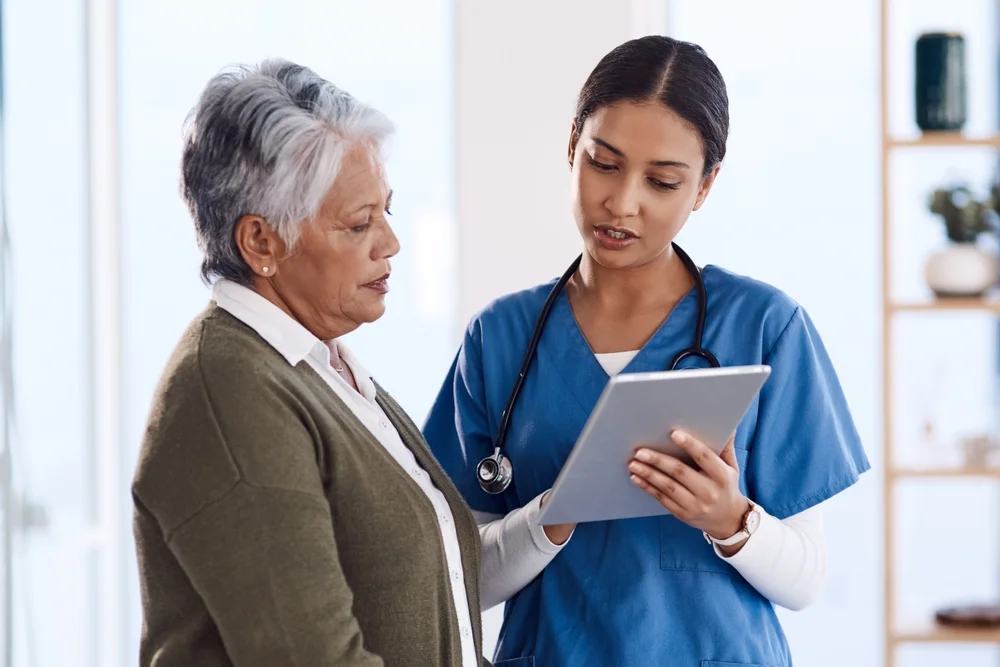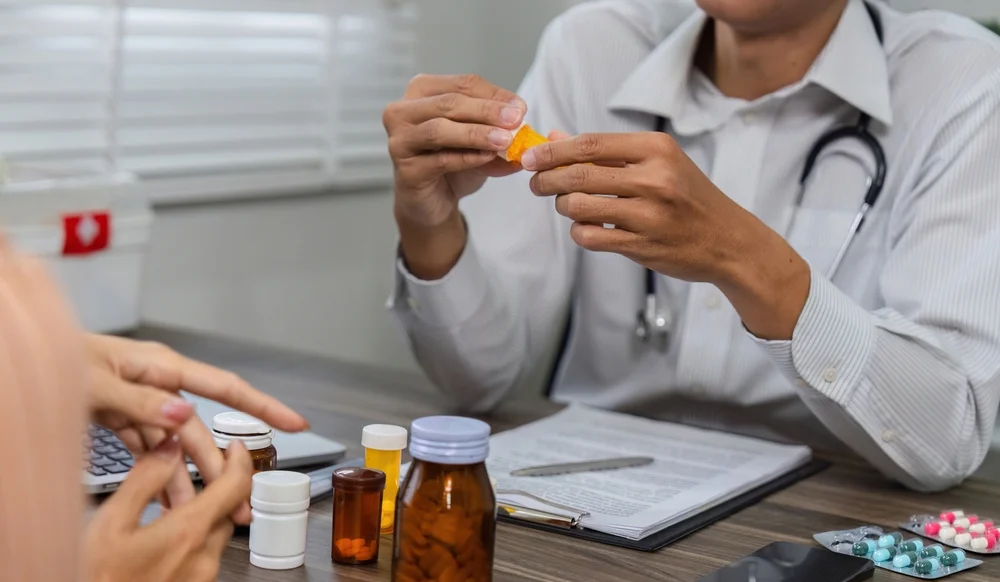Table of Contents
Toggle- Understanding Prescription Drug Abuse
- Commonly Misused Prescription Drugs
- How Prescription Drug Abuse Starts
- How Prescription Drug Abuse Affects Your Health
- How Prescription Drug Abuse Can Affect Your Life
- Signs and Symptoms of Prescription Drug Abuse
- How to Prevent Prescription Drug Abuse
- Treatment Options for Prescription Drug Addiction
- How Prescription Drug Abuse Affects Families and Communities
- FAQs
Prescription drugs are meant to help with pain, anxiety, and other health issues. But when they are taken the wrong way, like using higher doses, taking them without a prescription, or for non-medical reasons, they can be dangerous. This is a growing problem that affects people from all walks of life, leading to serious health risks, addiction, and even life-threatening consequences.
It is important to understand how prescription drug abuse starts, what the warning signs are, and how to prevent it. Whether you’re worried about someone you love or just want to be informed, this guide will help you recognize the risks, understand the effects, and explore treatment options.

Understanding Prescription Drug Abuse
Prescription drug abuse happens when someone takes medicine in a way their doctor didn’t intend. This could mean taking too much, using someone else’s prescription, or taking it just to get a certain feeling instead of treating a medical condition. These medications are supposed to help with pain, anxiety, and other health issues, but misusing them can be dangerous and even lead to addiction.
A lot of people assume prescription drugs are always safe because they come from a doctor or pharmacy. But if they’re not taken the right way, they can be just as harmful as illegal drugs like heroin or cocaine. Prescription drug abuse affects teenagers, adults, and even older people. Understanding why it happens, which medications are most commonly misused, and the risks involved can help people make safer choices.
Commonly Misused Prescription Drugs
Not all prescription medications are addictive, but some have a higher risk of misuse. These drugs can be dangerous when taken in larger doses, used without a prescription, or mixed with other substances.
Painkillers (Opioids)
Opioids are strong pain relievers often prescribed for injuries, surgeries, or chronic pain. While they help with pain, they can also be highly addictive. Some of the most commonly misused opioids include:
- Oxycodone (OxyContin, Percocet)
- Hydrocodone (Vicodin)
- Fentanyl
- Morphine
Stimulants
These medications are usually prescribed for ADHD but are sometimes misused to stay awake, improve focus, or boost energy. Commonly misused stimulants include:
- Ritalin (methylphenidate)
- Adderall (amphetamine)
Anti-Anxiety and Sleep Medications
Drugs for anxiety and sleep disorders can be helpful when used correctly, but they can also lead to dependence if misused. Some of the most commonly misused medications in this category include:
- Benzodiazepines (for anxiety)
- Xanax (alprazolam)
- Valium (diazepam)
- Ativan (lorazepam)
- Sleep Aids
- Ambien (zolpidem)
- Lunesta (eszopiclone)
Even when taken as directed, these medications can have risks. Misusing them by taking too much, using them without a prescription, or mixing them with alcohol can lead to serious health issues, addiction, or even overdose.

How Prescription Drug Abuse Starts
Prescription drug abuse doesn’t always come from bad intentions. A lot of people start taking these medications for real health issues like pain, anxiety, or trouble sleeping. But over time, they may start depending on them too much. Others use them for fun, thinking they’re safer than illegal drugs.
Here are some common reasons why people end up misusing prescription drugs:
- Chronic Pain or Anxiety – When someone is in constant pain or struggling with anxiety, they might take more medication than prescribed, thinking it will help more. But this can quickly turn into dependence.
- Peer Pressure – Teens and young adults, especially in school or at work, may take these drugs to fit in, focus better, or stay awake longer.
- Easy Access – Many homes have leftover prescription drugs, making it easy for family members, especially teenagers, to try them out.
- Misunderstanding the Risks – Some people assume that if a doctor prescribes a drug, it is always safe, even if they take it differently than they are supposed to.
- Struggling with Mental Health – Stress, anxiety, and depression can lead people to self-medicate, especially with anti-anxiety medications or sedatives.
- Past Substance Use – If someone has struggled with alcohol or drug use before, they may be more likely to misuse prescription drugs.
Knowing the risks can help people spot early warning signs and take action before things get worse. These medications can be helpful when used the right way, but if misuse starts becoming a habit, it is important to reach out for help.
How Prescription Drug Abuse Affects Your Health
Misusing prescription drugs can take a serious toll on both your body and mind. Some effects happen right away, while others build up over time.
Short-Term Effects
Taking prescription drugs the wrong way can lead to:
- Drowsiness or dizziness – This is common with opioids, sedatives, and anti-anxiety meds.
- Slow breathing – High doses of opioids and sedatives can slow your breathing too much, which can be dangerous.
- Confusion and memory problems – Some medications, like benzodiazepines and sleep aids, can make it harder to think clearly.
- Fast heartbeat and high blood pressure – Stimulants like Adderall can put extra strain on your heart, which can cause chest pain or, in serious cases, a heart attack.
- Mood swings or anxiety – Some drugs can cause paranoia, agitation, or even hallucinations.
- Nausea and vomiting – Opioids and other medications can upset your stomach.
Long-Term Effects
Over time, misusing prescription drugs can lead to serious health problems, including:
- Addiction and dependence – Your body gets used to the drug, making it hard to stop without cravings or withdrawal symptoms.
- Organ damage – Opioids can harm your liver, stimulants can weaken your heart, and sedatives can impact brain function.
- Memory and focus issues – Long-term use of certain drugs can make it harder to think clearly or concentrate.
- Mental health struggles – Anxiety, depression, and mood disorders can develop or get worse.
- Weaker immune system – Your body may have a harder time fighting off infections.
- Higher risk of overdose – The longer someone misuses prescription drugs, the greater the chance of taking a life-threatening dose.
The effects depend on the type of drug, how much is taken, and for how long. The sooner someone reaches out for help, the better their chances of avoiding long-term damage.
How Prescription Drug Abuse Can Affect Your Life
Prescription drug abuse isn’t just bad for your health. It can also cause serious legal and social problems that affect your future, relationships, and overall well-being.
Legal Trouble
- Having prescription drugs without a prescription – Some medications, like opioids, stimulants, and anti-anxiety drugs, are controlled substances. If you’re caught with them and don’t have a valid prescription, you could face fines or even jail time.
- Faking or lying to get prescriptions – Some people try to get extra medication by doctor shopping, faking symptoms, or forging prescriptions. These are serious crimes that can lead to legal charges.
- Driving while under the influence – Some prescription drugs can impair judgment and reaction time, just like alcohol. If you drive while under the influence, you could get a DUI.
- Losing your job or professional license – Many workplaces have strict drug policies. If you’re in a field like healthcare or law enforcement, misusing prescription drugs could cost you your job or license.
Social Struggles
- Relationship problems – Misusing prescription drugs can lead to fights, broken trust, and distance between you and your loved ones.
- Work or school issues – Drug abuse can make it hard to concentrate, meet deadlines, or keep up with responsibilities, which can lead to job loss or poor grades.
- Money problems – Addiction can lead to spending too much on medication, legal fees, or medical bills, putting a strain on your finances.
- Feeling alone – Many people struggling with addiction pull away from friends and family, leading to loneliness and depression.
Prescription drug abuse does not just affect the person using it. It also impacts the people around them. The good news is that help is out there, and recovery is possible with the right support.
Signs and Symptoms of Prescription Drug Abuse
Spotting the signs of prescription drug abuse early can help prevent serious health problems. At first, the changes might be small, but over time, physical, emotional, and behavioral shifts can become more obvious.
Physical Signs of Abuse
Different medications affect the body in different ways. Some common physical signs of prescription drug abuse include:
- Extreme tiredness or drowsiness – Often happens with opioids, sedatives, and anti-anxiety medications.
- Loss of balance or coordination – More common with sleep aids and benzodiazepines.
- Unusual pupil size – Stimulants like Adderall can make pupils larger, while opioids can make them tiny.
- Slurred speech – A common sign of sedative or opioid misuse.
- Changes in appetite – Stimulants can cause weight loss, while other drugs might lead to cravings.
- Nausea, vomiting, or stomach pain – Often linked to opioid abuse.
- Frequent headaches or dizziness – Can happen with many types of prescription drug misuse.
Changes in Behavior
Beyond physical signs, shifts in behavior can also be a red flag. Some things to look out for:
- Taking more than prescribed – They may say their medication isn’t working and start increasing their dose on their own.
- Going to multiple doctors – Trying to get extra prescriptions.
- Using someone else’s medication – Borrowing or taking pills from friends or family.
- Being secretive or defensive – Avoiding conversations about their medication or getting upset when asked about it.
- Money problems – Spending too much on medication instead of other necessities.
- Struggling at work or school – Trouble focusing, missing days, or a drop in performance.
- Taking risks – Driving under the influence, breaking the law, or putting themselves in danger.
Emotional and Mental Health Effects
Prescription drug abuse doesn’t just affect the body, it also impacts mental and emotional well-being. Some common signs include:
- Mood swings – Sudden shifts from happy to sad or angry.
- Anxiety or paranoia – Feeling nervous or overly suspicious.
- Depression – Long-term misuse can cause or worsen depression.
- Irritability or aggression – Snapping at others or becoming easily frustrated.
- Losing interest in things they used to enjoy – Pulling away from friends, family, or hobbies.
Signs of Withdrawal
If someone suddenly stops taking a misused medication, withdrawal symptoms can appear. These vary depending on the drug but may include:
- Opioids: Muscle pain, sweating, chills, nausea, and strong cravings.
- Stimulants: Fatigue, depression, trouble focusing, and irritability.
- Sedatives or anti-anxiety drugs: Insomnia, anxiety, confusion, and even seizures.
Some withdrawal symptoms can be dangerous, so medical help may be needed.
When to Get Help
If you or someone you know is showing signs of prescription drug abuse, reaching out for help can make a big difference. It may be time to seek support if:
- They can’t stop using the medication.
- They experience withdrawal symptoms when trying to quit.
- Their drug use is hurting relationships, work, or daily life.
- They are taking serious risks to get more medication.
Help is available through counseling, support groups, and medical detox programs. The sooner someone seeks support, the better their chances of recovery.
How to Prevent Prescription Drug Abuse
Prescription drug abuse is a real problem, but there are simple ways to help prevent it. Whether you take medication yourself or care for someone who does, using prescriptions responsibly and having open conversations can make a big difference.
Use and Store Medications Safely
The way you use and store medications matters. Here’s what you can do:
- Take your meds exactly as prescribed – Follow your doctor’s instructions and never take more than directed.
- Don’t share your medication – Your prescription is meant for you. Giving it to someone else could be dangerous.
- Keep medications in a safe place – Store them somewhere secure and out of reach of kids, teens, or anyone who might misuse them.
- Get rid of leftover pills – If you have extra medication, don’t keep it. Many pharmacies and community programs have safe disposal options.
Educating Family Members and Young Adults
One of the best ways to prevent drug abuse is to talk about it. Make sure your family knows the risks.
- Have open and honest conversations – Let kids and teens know that prescription drugs can be harmful if misused.
- Be a good example – Take your meds responsibly and explain why following the doctor’s directions is important.
- Recognize warning signs – Teach family members how to recognize potential signs of abuse so they can step in early if needed.
The Role of Healthcare Providers in Prevention
Healthcare providers play a big role in preventing prescription drug abuse. They can:
- Be careful with prescriptions – Doctors should assess a patient’s needs before prescribing addictive medications.
- Check in with patients – Regular visits help spot early signs of misuse.
- Teach safe medication use – Clear instructions can prevent accidental misuse.
- Use monitoring programs – These track prescriptions to prevent doctor shopping and overuse.
Alternative Pain Management Strategies
Many people misuse prescription drugs, especially opioids, because they’re in pain. But there are other ways to manage pain, including:
- Physical therapy – Stretching and strengthening exercises can help with injuries and chronic pain.
- Massage or acupuncture – These treatments may provide natural pain relief.
- Over-the-counter pain meds – Ibuprofen or acetaminophen can work for some types of pain.
- Mindfulness and meditation – Stress management techniques can help people cope with pain in a healthier way.
Community Support and Awareness
Preventing prescription drug abuse isn’t just an individual effort, it takes a community. Here’s how communities can help:
- Drug take-back events – Many local programs allow people to dispose of unused medication safely.
- Educational workshops – Schools, workplaces, and community centers can spread awareness about the dangers of misuse.
- Support groups – Groups like Narcotics Anonymous provide help for those struggling with addiction.
- Public awareness campaigns – Nationwide efforts teach people about the risks of prescription drug abuse.
By using medications safely, talking openly, and supporting community efforts, we can all help reduce prescription drug abuse.
Treatment Options for Prescription Drug Addiction
Recovering from prescription drug addiction is possible with the right support and treatment. There’s no one-size-fits-all solution, but a mix of medical care, therapy, and support can help people regain control of their lives.
Detox and Withdrawal
The first step in recovery is usually detox, where the body clears the drug from its system. This can be difficult, especially for those who have been taking the medication for a long time.
- Medical supervision helps – Withdrawal symptoms can be uncomfortable or even dangerous. A doctor can help manage symptoms and ensure safety.
- Gradually reducing the dosage – In some cases, doctors lower the dose over time instead of stopping suddenly to ease withdrawal.
- Taking care of the body – Drinking water, eating healthy, and getting enough rest can make detox a little easier.
Medication-Assisted Treatment (MAT)
For some, medication can help manage cravings and withdrawal symptoms. This is often used for opioid addiction but may also help with other types of prescription drug dependence.
- Methadone and buprenorphine – Help reduce cravings and ease withdrawal from opioids.
- Naltrexone – Blocks the effects of opioids and helps prevent relapse.
- Other medications – Depending on the drug, doctors may prescribe different medications to support recovery.
Medication works best when combined with therapy to address the emotional and mental side of addiction.
Therapy and Counseling
Addiction isn’t just physical. It also affects emotions, thoughts, and behaviors. Therapy can help people understand what led to their addiction, build coping skills, and start fresh.
- Cognitive Behavioral Therapy (CBT) – Helps people recognize and change negative thought patterns that lead to drug use.
- Motivational Interviewing (MI) – Helps people find their own reasons for quitting and staying drug-free.
- Family therapy – Addiction doesn’t just impact one person. It affects their loved ones, too. Family therapy can help rebuild trust and improve relationships.
Support Groups and Recovery Programs
Connecting with others who have been through similar struggles can be an important part of recovery.
- 12-step programs – Groups like Narcotics Anonymous (NA) provide structure and peer support.
- Non-12-step programs – Options like SMART Recovery focus on self-empowerment and science-based strategies.
- Online and in-person support groups – Virtual meetings can help those who can’t attend in person.
Staying on Track After Treatment
Recovery doesn’t end after detox or rehab. Long-term care is important for avoiding relapse and building a healthy life.
- Continuing therapy – Many people keep going to counseling or support groups to stay focused.
- Healthy habits – Exercise, good nutrition, and stress management can make a big difference.
- Building a support system – Staying connected with family, friends, or mentors who support a drug-free life can help.
Overcoming addiction takes time, but with the right support, lasting recovery is possible. Everyone’s journey is different, but finding a treatment plan that works and staying committed can lead to a healthier, drug-free life.
How Prescription Drug Abuse Affects Families and Communities
Prescription drug abuse doesn’t just harm the individual. It impacts loved ones and the community. Families may face emotional and financial struggles, while communities work to provide support and education.
How Addiction Impacts Loved Ones
When someone misuses prescription drugs, it can strain relationships and create challenges such as:
- Broken trust – Lying or stealing medication can damage relationships.
- Emotional stress – Watching a loved one struggle can cause anxiety and frustration.
- Increased conflict – Arguments over drug use or money can create tension.
- Neglected responsibilities – Addiction can make it hard to keep up with work or family duties.
Financial and Emotional Struggles
Families may face:
- High healthcare costs – Rehab and medical expenses can be overwhelming.
- Job loss – Addiction can make it hard to maintain employment.
- Legal troubles – Fines, legal fees, or jail time may occur.
- Emotional exhaustion – Supporting an addicted loved one can lead to stress and burnout.
Where to Find Help
Communities offer resources such as:
- Support groups – Groups like Al-Anon and Nar-Anon help families.
- Rehabilitation programs – Treatment centers provide inpatient and outpatient care.
- Crisis hotlines – Helplines offer immediate support.
- Awareness programs – Schools and organizations educate on prevention.
Helping Someone Struggling with Addiction
- Talk openly – Show care and avoid judgment.
- Offer treatment options – Help them find rehab or counseling.
- Set boundaries – Support them without enabling their behavior.
- Be patient – Recovery takes time and may have setbacks.
Understanding Prescription Drug Abuse and How to Get Help
Prescription drug abuse can affect anyone, and it doesn’t just impact the person struggling. It affects families and entire communities. What starts as a real need for medication can sometimes turn into dependency, making life harder in many ways. It can take a toll on physical and mental health, relationships, and daily life. That’s why it’s so important to understand the risks, recognize the warning signs, and know when to ask for help.
The good news is that recovery is possible. With the right support, whether through medical treatment, therapy, or community resources, people can heal and move forward. Loved ones and communities also play a big role in creating a safe, judgment-free space where people feel comfortable reaching out.
If you or someone you care about is struggling with prescription drug abuse, you’re not alone. There’s help out there, and taking that first step can lead to a healthier, drug-free life.
FAQs
1. What is prescription drug abuse?
Prescription drug abuse happens when someone takes medication in a way that wasn’t prescribed. This could mean taking too much, using someone else’s prescription, or taking it just to get high instead of for a real medical need.
2. What are the most commonly misused prescription drugs?
Some prescription drugs are misused more often than others, including:
- Opioids – Pain relievers like oxycodone and hydrocodone.
- Anti-anxiety and sleep medications – Drugs like Xanax, Valium, and Ambien.
- Stimulants – ADHD medications like Adderall and Ritalin.
3. How do people get addicted to prescription drugs?
Addiction can happen when someone takes a prescription drug for longer than needed, in high doses, or without a doctor’s supervision. Things like genetics, mental health issues, peer pressure, and easy access to medication can all increase the risk.
4. What are the signs of prescription drug abuse?
Some red flags to watch for:
- Taking more than the prescribed dose.
- Mood swings or unusual behavior.
- Going to different doctors to get extra prescriptions (“doctor shopping”).
- Feeling sick or experiencing withdrawal symptoms when not taking the drug.
5. What are the health risks of misusing prescription drugs?
In the short term, it can cause drowsiness, confusion, nausea, or slowed breathing. Long-term misuse can lead to organ damage, memory problems, mental health struggles, or even overdose.
6. How can I help someone who may be misusing prescription drugs?
- Talk to them with care and without judgment.
- Encourage them to seek professional help.
- Set boundaries to avoid enabling their drug use.
- Offer support throughout their recovery.
7. What are the treatment options for prescription drug addiction?
There are several ways to treat prescription drug addiction, including:
- Medical detox – Helps manage withdrawal safely.
- Medication-assisted treatment (MAT) – Reduces cravings and withdrawal effects.
- Therapy and counseling – Helps with the emotional and mental side of addiction.
- Support groups – Offer long-term encouragement from others going through the same thing.
8. How can I prevent prescription drug abuse at home?
- Store medications in a safe place.
- Get rid of unused prescriptions properly.
- Always follow the doctor’s instructions.
- Talk to your family, especially teens, about the risks.
- Consider other ways to manage pain if possible.
9. Can someone recover from prescription drug addiction?
Yes, recovery is possible! With the right help and support, many people overcome prescription drug addiction and go on to live healthy, drug-free lives. The key is seeking help early and staying committed to the process.
10. Is prescription drug abuse the same as addiction?
Not always. Prescription drug abuse means using medication in a way that wasn’t prescribed, like taking too much or using someone else’s. Addiction is when someone feels a strong, uncontrollable need to keep using the drug, even when it’s causing harm. Abuse can lead to addiction, but not everyone who misuses prescription drugs becomes addicted.






